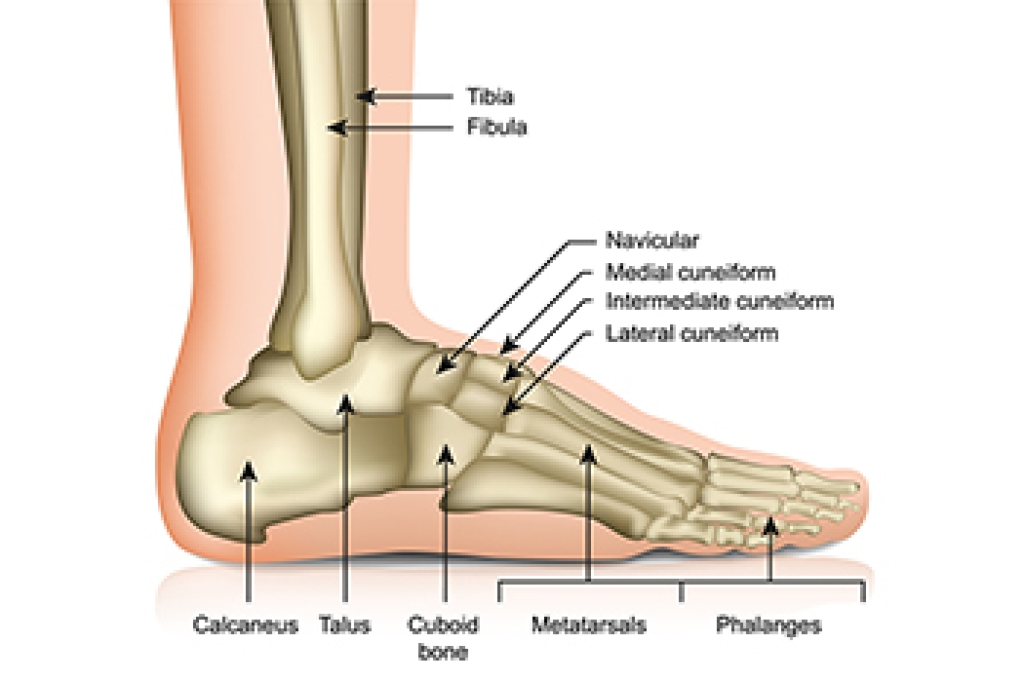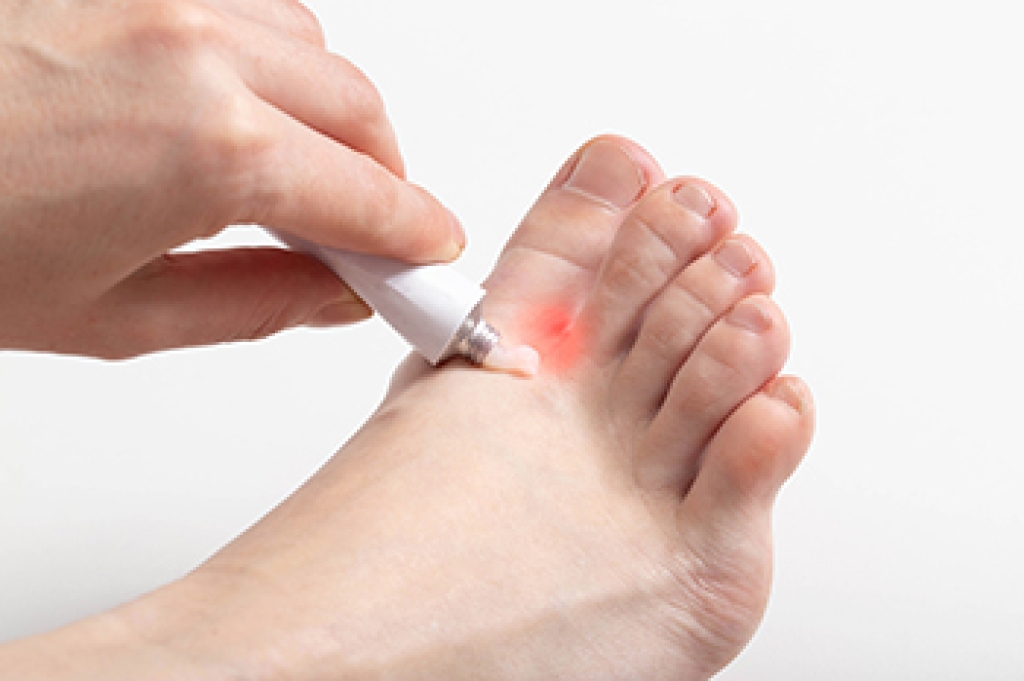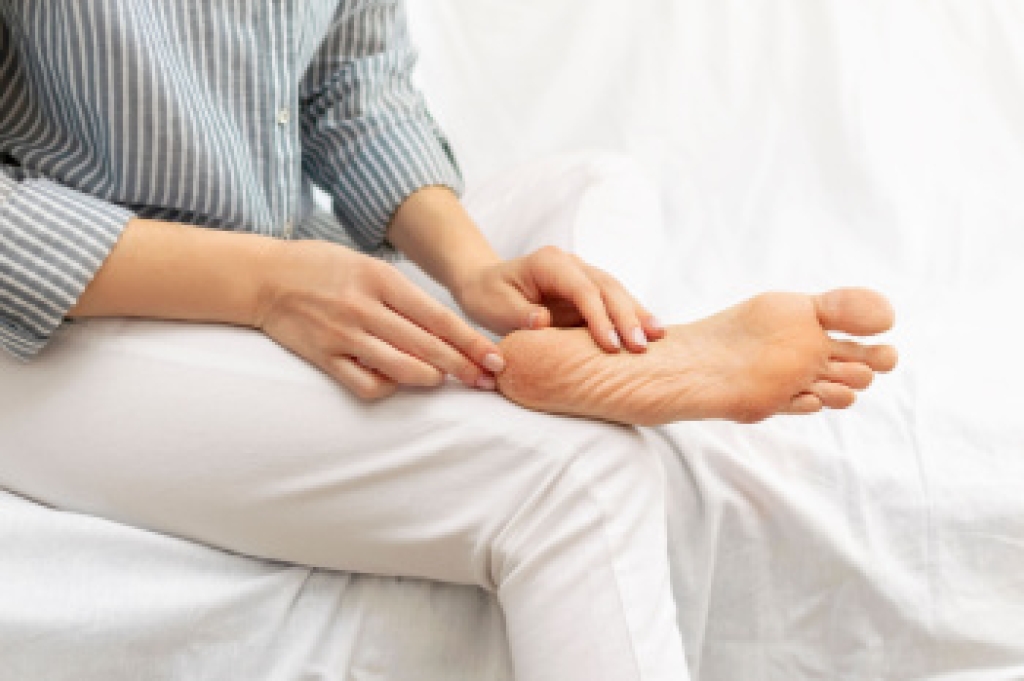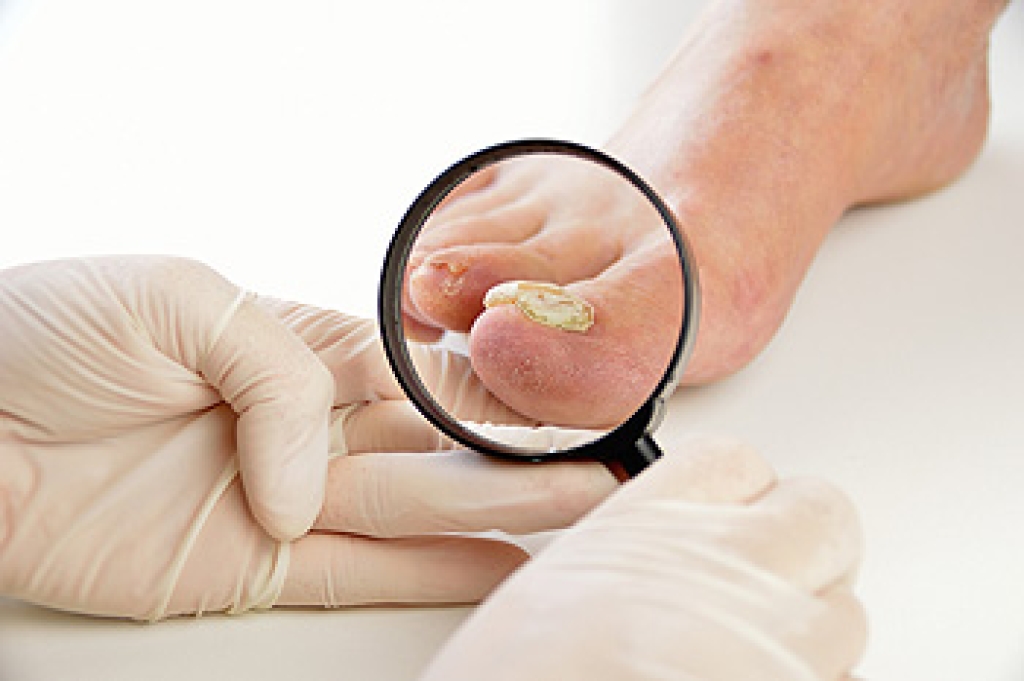Connect With Us
Blog
Blog
Types of Ankle Fractures

Ankle fractures involve breaks in the bones that form the ankle joint. This includes the tibia and fibula, which are leg bones that meet at the talus, which supports the foot as it moves up and down. Some injuries also affect the back or inner edges of the tibia, known as the posterior and medial malleolus. These fractures typically occur when the ankle twists inward or outward, but they can also result from falling, missing a step, or landing awkwardly in worn-out shoes with inadequate support or while wearing flip-flops. Stable fractures keep the joint aligned, while unstable fractures cause the talus to shift, raising the risk of long-term pain and arthritis. A podiatrist can assess bone position, review imaging, and determine whether the ankle can heal with protection or if surgery is needed to regain alignment. If you believe you have fractured an ankle bone, it is suggested that you make an appointment with a podiatrist for an exam and treatment.
Broken ankles need immediate treatment. If you are seeking treatment, contact Elie C. Daniel, DPM from Illinois. Our doctor can provide the care you need to keep you pain-free and on your feet.
Broken Ankles
A broken ankle is experienced when a person fractures their tibia or fibula in the lower leg and ankle area. Both of these bones are attached at the bottom of the leg and combine to form what we know to be our ankle.
When a physician is referring to a break of the ankle, he or she is usually referring to a break in the area where the tibia and fibula are joined to create our ankle joint. Ankles are more prone to fractures because the ankle is an area that suffers a lot of pressure and stress. There are some obvious signs when a person experiences a fractured ankle, and the following symptoms may be present.
Symptoms of a Fractured Ankle
- Excessive pain when the area is touched or when any pressure is placed on the ankle
- Swelling around the area
- Bruising of the area
- Area appears to be deformed
If you suspect an ankle fracture, it is recommended to seek treatment as soon as possible. The sooner you have your podiatrist diagnose the fracture, the quicker you’ll be on the way towards recovery.
If you have any questions, please feel free to contact our offices located in Princeton, Peru, and Mendota, IL . We offer the newest diagnostic and treatment technologies for all your foot care needs.
Athlete’s Foot and Podiatric Treatment Options

Athlete’s foot is a common fungal skin infection that affects the feet, particularly the areas between the toes and the soles. It develops when fungi thrive in warm and moist environments, leading to irritation of the skin. Symptoms often include itching, burning, redness, peeling, and occasional blistering. Risk factors include excessive sweating, wearing tight or non-breathable footwear, walking barefoot in public areas, and having a weakened immune system. Causes may involve prolonged moisture exposure, poor foot hygiene, or contact with contaminated surfaces. A podiatrist can help by accurately diagnosing the condition and prescribing effective antifungal treatments. If you notice persistent itching or skin changes on your feet, it is suggested that you consult a podiatrist who can offer effective relief and treatment solutions.
Athlete’s foot is an inconvenient condition that can be easily reduced with the proper treatment. If you have any concerns about your feet and ankles, contact Elie C. Daniel, DPM from Illinois. Our doctor will treat your foot and ankle needs.
Athlete’s Foot: The Sole Story
Athlete's foot, also known as tinea pedis, can be an extremely contagious foot infection. It is commonly contracted in public changing areas and bathrooms, dormitory style living quarters, around locker rooms and public swimming pools, or anywhere your feet often come into contact with other people.
Solutions to Combat Athlete’s Foot
- Hydrate your feet by using lotion
- Exfoliate
- Buff off nails
- Use of anti-fungal products
- Examine your feet and visit your doctor if any suspicious blisters or cuts develop
Athlete’s foot can cause many irritating symptoms such as dry and flaking skin, itching, and redness. Some more severe symptoms can include bleeding and cracked skin, intense itching and burning, and even pain when walking. In the worst cases, Athlete’s foot can cause blistering as well. Speak to your podiatrist for a better understanding of the different causes of Athlete’s foot, as well as help in determining which treatment options are best for you.
If you have any questions please feel free to contact our offices located in Princeton, Peru, and Mendota, IL . We offer the newest diagnostic and treatment technologies for all your foot and ankle needs.
Managing Cracked Heels

Cracked heels occur when the skin on the heel becomes dry, thick, and unable to stretch, leading to painful splits that can widen and deepen over time. The heel may look rough, flaky, or yellowed, and, in more severe cases, the cracks may appear red or inflamed. It may feel sore, tight, or sharp with each step, and standing for long periods of time can increase discomfort. Common causes include dry skin, wearing ill-fitting footwear, prolonged barefoot walking, obesity, and underlying conditions like eczema or diabetes. A podiatrist can begin by assessing the severity of the cracks, checking for infection, and identifying any mechanical issues that contribute to excess pressure on the heels. Treatment options include gentle debridement of thick skin, moisturizing therapies, advice on proper footwear, and guidance on long-term skin care routines. Because early care can prevent worsening and support healthy skin recovery, it is suggested that you schedule an appointment with a podiatrist for effective treatment solutions, which may include prescribed medication.
If the skin on your feet starts to crack, you may want to see a podiatrist to find treatment. If you have any concerns, contact Elie C. Daniel, DPM from Illinois. Our doctor can provide the care you need to keep you pain-free and on your feet.
Cracked Heels
It is important to moisturize your cracked heels in order to prevent pain, bleeding, and infection. The reason cracked heels form is because the skin on the foot is too dry to support the immense pressure placed on them. When the foot expands, the dry skin on the foot begins to split.
Ways to Help Heal Them
- Invest in a good foot cream
- Try Using Petroleum Jelly
- Ease up on Soaps
- Drink Plenty of Water
Ways to Prevent Cracked Heels
- Moisturize After Showering
- Skip a Shower
- Keep Shower Water Lukewarm
- Don’t Scrub Your Feet
If you are unsure how to proceed in treating cracked heels, seek guidance from a podiatrist. Your doctor will help you with any questions or information you may need.
If you have any questions, please feel free to contact our offices located in Princeton, Peru, and Mendota, IL . We offer the newest diagnostic and treatment technologies for all your foot care needs.
Risk Factors for Toenail Fungus

Toenail fungus develops when fungi enter the nail through small openings in the skin, and certain factors increase the risk of this happening. Tight shoes that place ongoing pressure on the toenails and walking barefoot in warm, damp areas like pools or locker rooms increase exposure to fungal organisms. Repeated nail damage from sports or rubbing inside shoes also creates openings where fungus can grow. People with circulation problems in the feet, including long-term vascular issues, have a higher risk because the body has a harder time fighting infections in the toes. Constant moisture around the toenails, artificial nails on the toes, and skin conditions that affect the nail surface can also increase vulnerability. A podiatrist can assess nail discoloration, thickening, or shape changes and provide the appropriate treatment, including surgery when needed. If you have toenails that have changed in appearance, it is suggested that you make an appointment with a podiatrist for a diagnosis and treatment.
For more information about treatment, contact Elie C. Daniel, DPM of Illinois. Our doctor can provide the care you need to keep you pain-free and on your feet.
Toenail Fungus Treatment
Toenail fungus is a condition that affects many people and can be especially hard to get rid of. Fortunately, there are several methods to go about treating and avoiding it.
Antifungals & Deterrence
Oral antifungal medicine has been shown to be effective in many cases. It is important to consult with a podiatrist to determine the proper regiment for you, or potentially explore other options.
Applying foot powder on the feet and shoes helps keep the feet free of moisture and sweat.
Sandals or open toed shoes – Wearing these will allow air movement and help keep feet dry. They also expose your feet to light, which fungus cannot tolerate. Socks with moisture wicking material also help as well.
If you have any questions please contact our offices located in Princeton, Peru, and Mendota, IL . We offer the newest diagnostic and treatment technologies for all your foot and ankle needs.
Blog Archives
- 2026
- 2025
- 2024
- 2023
- 2022
- 2021

